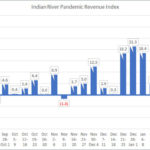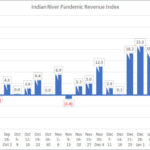Yield management, and its broader parent revenue management, are critical pieces to the financial success of any healthy organization. However, despite their importance, they remain widely unknown or misunderstood. Yield management attempts to maximize the revenue of a fixed/time-limited inventory (like hotel rooms or airline seats) by analyzing the interaction between price and volume. Yield management is narrow in its focus as it ignores the cost of inventory as well as the revenue derived from auxiliary parts of a business (like room service in hotels, or baggage fees on airlines). Revenue management is like yield management insofar as they share the common goal of maximizing revenue using similar analysis and tactics. However, revenue management includes considerations into ancillary revenue streams and the cost of goods sold. By including costs, revenue management can balance profit, and by including ancillary revenue streams it also evaluates total customer value. It is this wide focus that makes revenue management essential for any high-performing organization.
A practical example
The most common example of how revenue management is executed is in the businesses of hotel management and the airline industry. The primary source of revenue for hotels is found in their room rates. The revenue generated from the bookings is a simple multiplication of price and volume booked. Yield management looks at consumer behavior, their needs and wants, and attempts to maximize the price each guest pays for their room while still filling as many rooms as possible.
Revenue management uses the same analysis and tactics but considers the costs associated with gaining bookings, as well as the other sources of revenue and related costs. For example, a hotel will pay for marketing and other customer acquisition strategies, meaning that the profit derived from each booking is not uniform. Solely maximizing price and volume ignores the fluctuations in profit, an omission that revenue management addresses. Furthermore, selling room service or providing laundry also brings in revenue (and profit) to the hotel. Revenue management looks at this whole ecosystem of hotel activities to ensure that the total customer value is maximized — not just revenue from rooms.
Why is revenue management an evolution?
Finance professionals have been known to mock the lack of profit focus among sales leaders in an organization. Sacrificing profit to drive top-line growth is not always the best course of action. Neither is a sole focus on profit, because in the long term, you need both. Revenue management equally evaluates top and bottom line, ensuring finance and sales empower one another, which allows the organization to excel.
With revenue management ensuring finance and sales have aligned goals, your distribution organization will be able to avoid structural pitfalls that are faced by siloed organizations.
Pass the buck: Why are sales declining?
When you have a sales decline, whose fault is it in the yield management world? Finance would say it is sales. Without sales, there are fewer profit dollars, which affects every department negatively. On the other hand, sales would blame finance, citing unrealistic margin hurdles leading to customer defection issues. Revenue management forces the two groups to balance objectives and understand drivers.
Mediation: Who gets to make the call when you have different goals?
Without aligned goals, it’s difficult to make decisions without conflicting outcomes. This disjointedness will require a more senior mediator (think president overseeing VPs) to decide which direction to take, which adds yet another layer to an already complicated decision-making process. Additionally, the further the decision-maker is from the product in question, the less qualified they are to make the deciding vote. To avoid this situation, it is important to establish a system that can inherently find balance.
Price setting: How do you know if the price is right?
Price is a significant component in the success of an offer and, by extension, a business. Often, the goal is to find the maximum amount that the customer is willing to pay. However, if you are targeted on market share or sales, you may aim for a lower price to drive up volume, which results in lower profitability. A strong revenue management team will deliver a price strategy that maximizes profit and sales.
Better decision makers: Who sees the whole picture?
The best corporate decision-makers almost always act with the big-picture in mind. Whether it be the salesperson who used to be in finance, or the senior manager who has worked across multiple departments. Creating a P&L ownership culture makes everyone a better operator.
Questions to ask yourself
Moving from yield to revenue management is a necessity. To ensure your organization is moving in the right direction, begin by asking yourself a few of the following questions:
- Do we understand the differential cost associated with acquiring different classes of customers?
- Do we understand all revenue streams related to a customer and how they interrelate?
- Who are we targeting and why?
If you are not able to get clear questions to the above from across your organization, it’s more than likely you need to begin your revenue management journey.
Maxwell Gregory is a senior consultant at Revenue Management Labs. Revenue Management Labs help companies develop and execute practical solutions to maximize long-term revenue and profitability. Reach him at mgregory@revenueml.com.
Related Posts
-
Indian River Consulting Group’s (IRCG) weekly Pandemic Revenue Index for the work week of Feb.…
-
Indian River Consulting Group’s (IRCG) weekly Pandemic Revenue Index for the work week of Feb.…
-
Fortive posted a second-quarter profit of close to $181 million compared to $130 million in…





